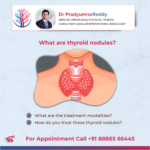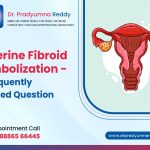Compared to the past two decades, the introduction of aortic stent-grafts in the management of aortic aneurysms is phenomenal. Endovascular aneurysm repair (EVAR) is a minimally-invasive surgical procedure used to treat an aortic aneurysm, most commonly an abdominal aortic aneurysm.
It is also used to treat the thoracic aortic disease, which is precisely termed – thoracic endovascular aortic/aneurysm repair(TEVAR). The procedure involves placing an expandable stent graft within the damaged aorta to treat the disease without open surgery.
Aortic aneurysm
An aortic aneurysm is defined as bulging or dilation in the wall of a blood vessel, generally an artery, which is caused due to weakness or degeneration in the artery wall.
The aneurysm can enlarge like a balloon, stretching the artery walls, which compromises the walls’ ability to stretch further. At this time, the aneurysm might rupture and cause bleeding.
The arteries in your body are the blood vessels that supply oxygen-rich blood and nutrients to various body parts. The aorta in your body is the largest artery that leads from your heart down to the belly (abdomen) through the diaphragm of your chest.
The section of the artery that travels through your abdomen is termed as the abdominal aorta.
Usually, your aortic artery walls are thick enough to handle the blood pressure generated from your heart during the blood flow. However, some of your health problems might damage the aorta walls, which results in the aneurysm. An aortic aneurysm is classified into two types:
Abdominal aortic aneurysm(AAA): The aneurysm is formed in the abdominal(belly) aorta, where the aorta supplies blood to your lower body.
Thoracic aortic aneurysm: These aneurysms are formed along the aortic artery located above the diaphragm, the wall between your chest and abdomen, which includes the ascending thoracic aorta, the descending thoracic aorta, and the aortic arch.
A large aneurysm can lead to life-threatening complications if it bursts and causes bleeding.
Causes of aortic aneurysm:
An aortic aneurysm might be caused due to many factors that break down the well-organized proteins in the wall of the aorta, which provide support and stabilization. However, the exact cause is yet to know.
- Atherosclerosis, which is the building-up of plaque, might cause abdominal aortic aneurysms.
- Genetic disorders such as PKD – polycystic kidney disease, Marfan syndrome, and turner’s syndrome, etc.
- Congenital syndromes
- Giant cell arteritis
- Trauma or previous surgery
- Infections to the aorta such as untreated syphilis, salmonella, or
- staphylococcus
Risk factors that may cause aortic aneurysm include:
- Older age (greater than 60)
- Males are four to five times more vulnerable to AAA than females
- Family history (hereditary)
- High fats in the blood called hyperlipidemia
- Hypertension (high blood pressure)
- Smoking thickens your blood
- Diabetes
Symptoms of aortic aneurysm:
Aortic aneurysms are symptomless in most of the people. But when the aneurysm bulges and exerts pressure on surrounding organs, you may observe symptoms like:
- Stomach pain or discomfort, which might come and go or often stays constant.
- Pain in your chest, abdomen, lower back, or just above your kidneys. Often it spread down to the groin, buttocks, and legs. The pain ranges from a mild ache to deep, or throbbing which may last for hours or days.
- A pulsating sensation in your belly.
- When the aneurysm produces blood clots, they might block the blood flow to your legs or feet, which results in a cold foot or a black or blue painful toe.
- Fever or weight loss in case of inflammatory aortic aneurysm.
In the case of a thoracic aneurysm, you may also observe the symptoms like back pain, cough, or breathing problems if the aneurysm is formed near the lungs, hoarseness, trouble swallowing or feeling pain while swallowing.
Symptoms of a ruptured aneurysm
If the aortic aneurysm bulges and bursts or rupture, it causes:
- Sudden and severe pain.
- A severe drop in blood pressure.
- Signs of shock.
Without prompt treatment, it might lead to death. These aortic aneurysms can be treated through open surgery or by an Endovascular Aneurysm Repair(EVAR).
How an Endovascular Aneurysm Repair (EVAR) performed
The best method to repair an aneurysm depends upon several factors, including the location and shape of the aneurysm as well as the physical condition of the patient. An ultrasound test is a widely used procedure to diagnose aortic aneurysms.
EVAR is a minimally invasive procedure performed in a sterile environment under the guidance of a fluoroscopic. Usually, it is done by a vascular surgeon, an interventional radiologist, or a cardiac surgeon. Sometimes a general surgeon or an interventional cardiologist might also perform EVAR.
- It is done under general anaesthesia or regional anaesthesia. The surgeon makes a small incision in your groin area to access the femoral arteries.
Then the surgeon will insert a thin, flexible tube called a catheter into the femoral artery. - Vascular surgeon and interventional radiologist work together to guide the catheter to the aneurysm through the femoral arteries.
- The surgeons use X-ray pictures that appear on the screen to guide the catheters to the right spot.
- An endograft or a stent-graft is also sent into the artery along with the catheter through another tube called as sheath. The doctor withdraws the sheath when the graft reaches the aortic aneurysm.
- This stent-graft is a mesh-like metal tube coated with a thin polyester fabric called the graft. The graft is deflated so that it can fit and travel through your blood vessel.
- After the stent graft reaches the aneurysm in the aortic artery, it is flattened(opened) and locked in place. This stent-graft then acts as a barrier and protects the weak walls of the aorta in place, preventing the aneurysm from bursting.
- The blood now flows through it without any pressure.
Potential benefits of an EVAR
- Less time under anaesthesia
- Prevention of pain and trauma associated with open surgery
- Less stay in the hospital
- Minimal blood loss
- The incisions made are very small
- Faster recovery
- Less post-surgical complications
Complications of endovascular stent grafting:
- Blood leakage around the graft is termed as endoleaks.
- Moving the graft away from actual position (“migration”) (uncommon, but might happen after many years of graft placement).
- Preventing the flow of blood through the graft (uncommon)
- Cardiac problems
- Respiratory problems
- Rupture or dissection of the blood vessel
- A reduced flow of blood to the bowel or kidneys (uncommon)
- Decline in kidney functions due to X-ray dye, which is common but temporary.
- Some people experience fever and an increase in the count of white blood cells after an endovascular stent grafting. These symptoms are temporary and can be treated with medicines like aspirin and ibuprofen.
Some other rare and severe complications include a ruptured artery, damage to your kidney, paralysis, obstructed blood flow to the abdomen or lower parts of your body, and infection around the graft.
Not every patient with an aneurysm is recommended for EVAR. In some patients, aneurysms form close to the kidneys, which are more challenging to treat.
You will be evaluated thoroughly with scans to determine whether the endovascular procedure can treat the aneurysm. If suitable, only you will be suggested to undergo EVAR, or else an open aneurysm is suggested.





